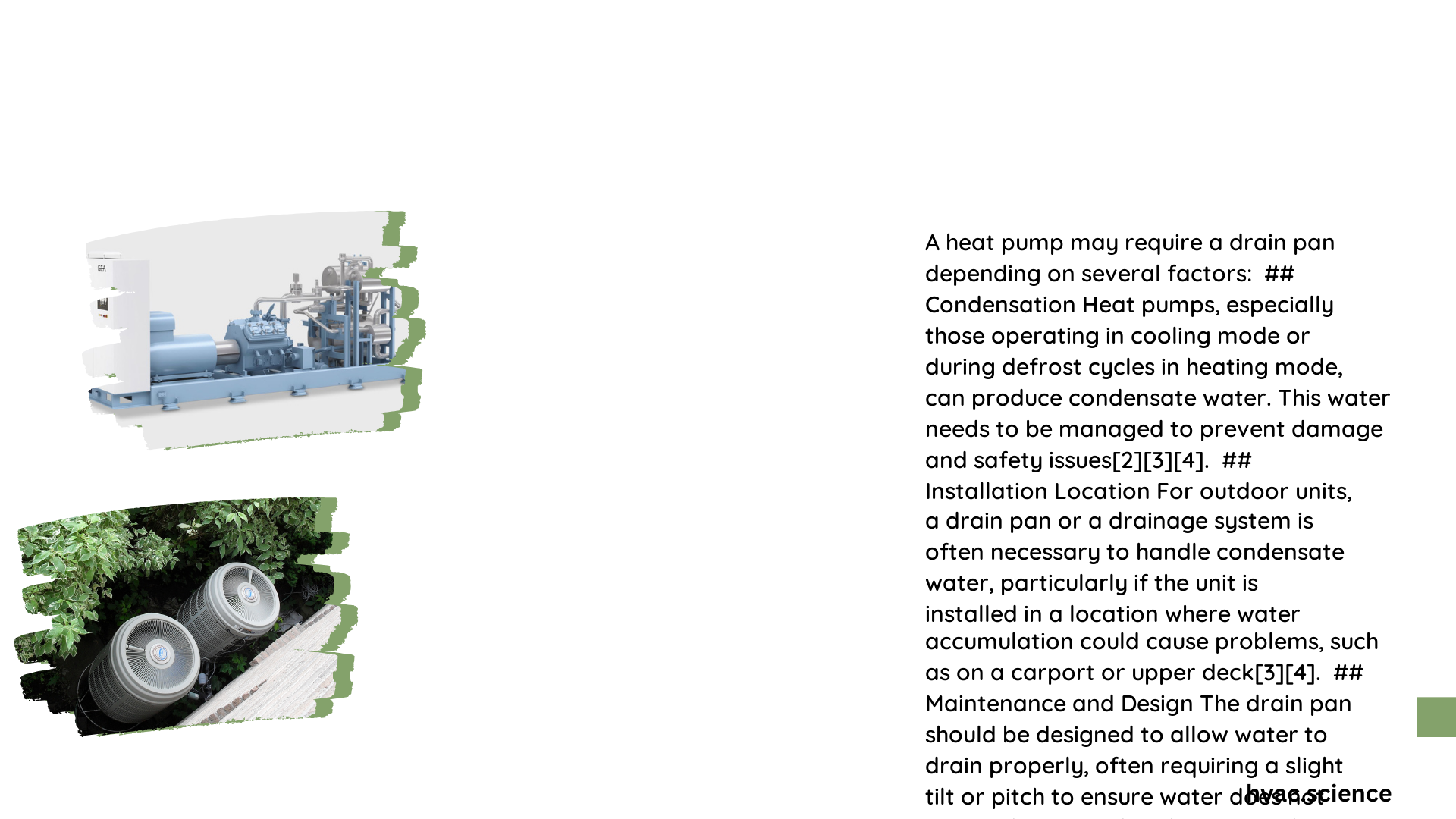Heat pumps generate significant condensation during cooling cycles, making a drain pan not just beneficial but essential for protecting your home’s infrastructure. A properly installed drain pan captures moisture from the evaporator coil, preventing potential water damage, mold growth, and structural deterioration. Without this critical component, homeowners risk expensive repairs and potential health hazards from uncontrolled moisture accumulation.
Why Does a Heat Pump Require a Drain Pan?
What Happens Without a Drain Pan?
Water accumulation in a heat pump system can lead to catastrophic consequences:
- Structural Damage: Uncontrolled moisture can deteriorate walls, ceilings, and floors
- Mold Growth: Stagnant water creates perfect breeding environments for harmful microorganisms
- System Corrosion: Continuous water exposure damages internal HVAC components
- Electrical Hazards: Water near electrical connections poses significant safety risks
How Much Condensation Does a Heat Pump Produce?
| Humidity Level | Daily Condensation (Gallons) | Risk Level |
|---|---|---|
| Low (30-40%) | 5-10 gallons | Moderate |
| Medium (50-60%) | 10-15 gallons | High |
| High (70-80%) | 15-20 gallons | Very High |
What Types of Drain Pans Exist?
- Primary Drain Pan
- Directly attached to evaporator coil
- Collects immediate condensation
- Typically made of plastic or metal
-
Includes direct drain line connection
-
Secondary Drain Pan
- Placed underneath entire HVAC unit
- Provides backup moisture collection
- Often includes float switch for overflow detection
- Recommended for horizontal system installations
Where Should Drain Pans Be Installed?

Drain pan placement depends on your heat pump’s configuration:
- Vertical Units: Pan attached directly beneath evaporator coil
- Horizontal Units: Pan installed under entire system, especially in attic spaces
- Outdoor Units: Integrated into system design to manage external condensation
What Are Installation Requirements?
Critical installation considerations include:
- Proper slope for water drainage
- Inclusion of p-trap in drain line
- Compliance with International Residential Code (IRC)
- Professional assessment of moisture management needs
What Are Potential Costs?
Cost breakdown for drain pan installation:
| Component | Price Range |
|---|---|
| Primary Drain Pan | $50 – $200 |
| Secondary Drain Pan | $100 – $300 |
| Professional Installation | $150 – $500 |
| Annual Maintenance | $100 – $250 |
How to Maintain Your Heat Pump Drain Pan?
Maintenance tips for optimal performance:
- Inspect drain pan quarterly
- Clean pan and drain lines annually
- Check for signs of corrosion or damage
- Ensure unobstructed water flow
- Monitor humidity levels in installation area
Expert Recommendations
Professional HVAC technicians universally recommend:
– Always install both primary and secondary drain pans
– Use float switches for additional protection
– Schedule regular professional inspections
– Replace drain pans every 5-7 years
By understanding and implementing proper drain pan management, homeowners can protect their heat pump investment and maintain a healthy indoor environment.
Pro Tip: Never ignore water accumulation or drainage issues in your heat pump system.
Final Thoughts
A drain pan is not optional—it’s a critical component in heat pump moisture management. Proper installation and maintenance prevent costly repairs and ensure system longevity.
